what happens to the blades made on forged in fire
The Untold Truth Of Forged In Fire
The all-time reality television focuses on talent. Sure, we all love drama, and watching a bunch of people scheme and plot and riff on some version of "I'k not hither to make friends" similar they invented the phrase is fun and all, just shows that pit smart, talented people against each other in a examination of skill? Magic.
That'south why the History Channel'southward Forged in Fire — in which bladesmiths compete to brand diverse knives, swords, and other bladed weapons — is such a success. Not only is the subject fascinating, it's as well educational both in terms of how these things are actually made and the history of some of the weapons they create. The best part is that they manage to wring drama out of the competition instead of interpersonal drama. Each episode is exciting because of the challenges posed to the competitors, non because of their personality conflicts. And as well the burn. We're non gonna lie, the fire has a lot to do with how great this show is. And while the series might seem like an open book, there's actually a lot going on under the surface. Here's the untold truth of Forged in Fire, some of which is really going to surprise you.
Forged in Fire was inspired past cooking shows
If you're wondering how someone comes up with the idea for a TV show nearly sweaty people beating slabs of metal into useful and oft beautiful weapons, wonder no more: You lot hang out with your teenage kids and pay attention.
Tim Healy, head of programming and evolution at the History Channel, explained (via Decider) that the inspiration for Forged in Burn down came from his 14-twelvemonth-old daughter's dearest of cooking contest shows like Chopped. Every bit anyone who'southward ever interacted with a 14-year-old kid knows, connecting with them can be challenging. And so in order to spend some time with her, Healy would sit and watch those culinary shows, and he began to wonder how he could do a "cooking competition show without cooking" (now that'southward some outside-the-box thinking).
He as well knew from experience that whenever a reality show featured a weapon, the ratings went upward, and that was his inspiration — a prove where they make weapons from scratch instead of fancy burritos. The thought eventually evolved towards bladed weapons specifically, merely Healy stuck with his initial inspiration, structuring the format like a cooking show with new competitors every episode.
A fan burned down a urban center block
Unlike reality cooking or design shows, where part of the fun is attempting to replicate what y'all just watched, Forged in Fire isn't the sort of show where y'all can leap off your couch, excited well-nigh fire and blades and wielding a 2-pound hammer like Thor. Bladesmithing is a time-consuming arts and crafts requiring a lot of specialized stuff. Information technology'due south also a very dangerous craft, as ane huge fan of the show discovered in 2017.
John Gomes of Cohoes, New York, a big fan of the prove, decided to spend one extremely windy afternoon trying to make a hammer in his backyard, using a burn down he started in a barrel as a forge. Co-ordinate to The New York Times, the fire got out of control, and the winds did the rest, spreading the fire to Gomes' home and so nearby flat buildings, somewhen driving nigh 30 people from their homes. Shawn Morse, the mayor, called it (via the New York Daily News) "the worst disaster this city has ever seen." Gomes was charged with arson and reckless endangerment, and one of the show's contestants, Kim Stahl, warned other fans, "Not every episode outlines all the procedures that were followed." Which, fair, simply nosotros're non certain how you can watch Forged in Burn down and think you can make a sword using a barrel in your backyard.
Forged in Fire is pretty unsafe
Okay, saying a testify virtually making bladed weapons is dangerous is like saying running with scissors is unsafe, but it'due south not actually the blades that you should worry near if y'all wander onto the set of Forged in Fire. Information technology'south the heat. As Erin Healy, the managing editor of Blade magazine, notes, with iv forges lined up next to each other, plus the estrus of the television studio lights, the set gets super hot. And while the place is vented, information technology's vented confronting asphyxiation, non rut.
Of form, the heat is part of the challenge, and experienced bladesmiths are used to working nether similar conditions, but that isn't magic protection confronting succumbing to the intense, blistering heat of the set. While the contestants are provided plenty of h2o and encouraged to drinkable it (and to take breaks), the show has had several cases of rut exhaustion, and at that place's been at least i episode (flavour 4's "The Katzbalger") where a contestant collapsed, suffering chest pains and heading to the infirmary instead of completing the challenge. And all this earlier the knives come out.
Forged in Burn has a woman problem
Bladesmithing has long been a male person-dominated field, and that's caused the show some difficulties. It's been criticized for the lack of female representation on the prove (the first season, in fact, had exactly nil women on information technology), especially since the host and judges are exclusively male. It's non entirely the bear witness's mistake, of course. There are simply four female Principal Bladesmiths in the country, subsequently all. In fact, Audra Draper get the first female Primary Bladesmith simply 20 years ago. And every bit contestant Rachel Oliver notes, about female bladesmiths don't utilise the forge technique that the prove features. Instead, they apply a wholly different technique known as "stock removal," making the search for female contestants even more than challenging.
The show has made a existent effort to increment the number of female person smiths, though, and producer Tim Healy explained (via Decider) that in flavour i, information technology was hard enough to find whatsoever bladesmiths willing to come on the show considering it was an unknown quantity. Since then, the testify has managed to have several female smiths on, and a few have even won the episode and walked away with the $10,000 prize.
The contestants take the weapons home
It's easy to imagine that making weapons comes with some legal complications, and there are a lot of rumors swirling effectually Forged in Burn down concerning what happens to all those swords, knives, and other bladed weapons in one case filming is finished. Many viewers note that weapons from past shows are often spotted hanging on the walls of the studio, and some accept claimed that under New York State law (the show is filmed in Brooklyn), the weapons have to be classified as "props" and kept by the production company. In other words, according to the rumors, contestants don't go to go on the weapons they worked and then hard for.
That sounds reasonable, especially when you've got a agglomeration of people making something terrifying like a Moro kris. But according to reality Tv writer Andy Dehnart of Reality Blurred, it'south also 100 percent fake. Dehnart really spoke with a spokesperson for the prove, who clarified that while the winning weapon is kept on display on their Winners Wall, anybody else gets their weapon back "as a symbol of [the show'southward] gratitude and out of respect for the amount of work put into the weapon."
Getting on Forged in Fire ain't piece of cake
While reality shows piece of work hard to hide a lot of the boring details from the viewer (and thank goodness) it obviously takes a lot of skill to get cast on any evidence focused on a craft similar bladesmithing. You're not just wandering the local mall asking people if they want to come make a twelfth-century Crusader sword and perchance win some money, afterwards all. You want actual bladesmiths who have a shot at successfully making the weapons they're tasked with. But you might not be enlightened of simply how much the contestants have to work simply to be considered.
Contestant Gabriel Mabry of Doberman Forge detailed some of the steps he had to get through, including answering a questions nearly metallurgy and doing both an interview and a background cheque. And contestant Dustin Parrella told the Richland Source that it goes even further than that. Afterwards applying to be on the evidence and sitting for multiple interviews via telephone and video, he had to actually forge a blade to the producers' specifications and submit photos of the finished product. And afterward all that, he reports he withal had to do "a couple more" interviews before existence invited to compete. Considering how carefully the contestants are screened for the evidence, it underscores just how challenging and difficult the blades created for the show actually are.
The show isn't a bladesmithing class
As John Gomes, the man who basically burned down his entire town trying to forge metal in his backyard afterward watching Forged in Fire, discovered, watching the show isn't really a substitute for learning how to bladesmith the right mode. As former contestant Kim Stahl told the New York Daily News, "Not every episode outlines all the procedures that were followed." In other words, the magic of editing means you lot might not be shown some absolutely essential but visually irksome (or fourth dimension-consuming) part of the process.
For case, many experienced bladesmiths like Darrell Markewitz have complained that while the testify loves a fiery "quench" (when the hot metal is plunged into h2o or oil to rapidly cool it, hardening the metal), it never shows the metal being tempered, which is a slower, less showy process designed to increase the durability of the metal after hardening. They also mutter that the judges often misuse bladesmithing jargon (which might be for the audience's benefit, as the testify can't expect its fans to become practiced blacksmiths simply to savour the competition) and speculate that many of the failed weapons are the result of skipped steps. That'southward all fine for something presented for entertainment purposes, of course. Just proceed in listen you're not going to be prepare to beginning your own bladesmithing business organisation after a few episodes.
Nigh of the blades on Forged in Fire aren't so smashing
Watching professionals and very accomplished hobbyists work to a high standard is ane of the greatest pleasures. Competence is sexy, especially when it involves something exotic similar hand-crafting bladed weapons. Just a lot of the weapons on this show aren't and then not bad. Some are ugly, some are easily broken, and some simply don't do the one thing a blade is supposed to practice — cut.
Steve Calvert, the bladesmith behind Light-green Beetle Gear, analyzed the show's episodes and determined that most of the failed weapons were due to some pretty fundamental forging errors you would think experienced bladesmiths would know to avoid. Merely it's of import to remember that this is a Idiot box prove, afterward all, and the contestants are working under artificial time and material constraints and striving to create a weapon they're probably unfamiliar with, all on an incredibly hot set that's crowded with equipment and other smiths plus a TV crew. Then let's not go too judgmental.
Forged in Fire was nigh Project Runway with guns
When Tim Healy, head of programming and evolution at the History Channel and the creator of Forged in Fire, was beginning spinning up the idea for reality series, he merely imagined a testify where people created "weapons" from scratch. The specific idea to have the contestants create bladed weapons came later. In fact, equally Decider reports, he consulted with Jodi Flynn, a fellow producer who was pitching a like concept at the time, Gunsmiths— a riff on Project Track in that would have had a fixed bandage and a flavour-long arc of challenges equally they created guns, with unlike challenges every week and a focus on the interactions and relationships between the smiths.
All the same, Healy really wanted a fresh group of smiths every week instead of Runway's fixed cast in order to take a deeper swoop into the civilisation surrounding the craft. Plus, his enquiry told him that on other reality shows like American Pickers or Pawn Stars, information technology was bladed weapons that resulted in ratings spikes. Then the gun aspect was put aside in favor of the bladed weapons approach the show has found so successful.
Near bladesmiths need the prize money
Every calendar week on Forged in Fire, four bladesmiths accept the challenge of making whatever weapon the prove chooses, and the winner receives $ten,000. That's pretty good money even when you take the extreme effort involved into account, both in making the weapon and even getting on the show in the first place (which requires several interviews, taking a metallurgy test, and creating a sample bract, all of which is uncompensated).
However, the three "losing" smiths get nada, bated from a trip to New York Urban center and being on television, of course. And that'southward besides bad, because according toCareer Trend, the median salary for a bladesmith is estimated to be about $31,000, with a low of $20,000 (and near of them make their coin creating cutlery instead of super awesome swords and the like). So nearly of these smiths could probably use that cash. However, actualization on the prove has other benefits. For example, Gabe Mabry told The Stanly News & Press that before being a contestant, his bladesmithing was a side hustle he did forth with several other jobs, but afterward being on the show, he was able to begin bladesmithing full time.
Not everyone involved was an skilful
There'due south a difference between being a weapons expert and being a bladesmith. Merely y'all might imagine that a show where bladesmiths accept their work judged would get folks who know all about the arts and crafts to exercise that. While judges J. Neilson, David Baker, and Ben Abbott have all-encompassing and impressive bract-making feel (Abbott was really a 2-time winner on the show before ascending to the estimate'south seat), host Wil Willis and Doug Marcaida came to the series with exactly nada bladesmithing knowledge. Willis is a onetime Regular army Ranger with a ton of experience using weapons of all sorts, and Marcaida is an edged weapon expert, knife designer, and martial artist. So certainly, they have the experience and noesis to gauge a finished weapon.
But still, the producers must've been a little concerned about this lack of knowledge. According to Vice, Willis had finally begun learning the basics of forging by flavour 4 of the show, and the History Channel even posted proof of Neilson teaching both Willis and Marcaida how to bladesmith, putting to rest any complaints that the smiths competing on the bear witness might not be getting the best judging feel.
Forged in Fire is controversial
Any time weapons are involved, things tin can get a little complicated. And that's also true for Forged in Burn down. This is a show, subsequently all, where estimate Doug Marcaida happily proclaims that a weapon "will kill" when he's pleased with the examination results. (To be fair, Marcaida spells and pronounces information technology KEAL, which stands for "'keep everyone live"). But the evidence's focus on blades and their ability to cut through ballistic dummies and cuts of beef (often filmed in cinematic slow motion) has had some police force and parents' groups in an uproar since its debut.
For example, The Dominicus has reported that some police organizations feel the prove "glorifies violence" and might exist an particularly bad influence on kids. This might be especially true in the U.k., where then-called "knife crime" has hitting historic highs in recent years. According to The Guardian, crimes involving bladed weapons rose seven percent in 2019 — near 45,000 cases in just 12 months. Unsurprisingly, the History Channel dismisses such worries, noting that in that location'south no prove of whatever link between the show and law-breaking rates involving knives or otherwise. For their part, the judges don't seem worried about inspiring the youths to violence. As Vice points out, J. Neilson is proudly teaching his own young children to be bladesmiths.
Source: https://www.grunge.com/38427/untold-truth-forged-fire/
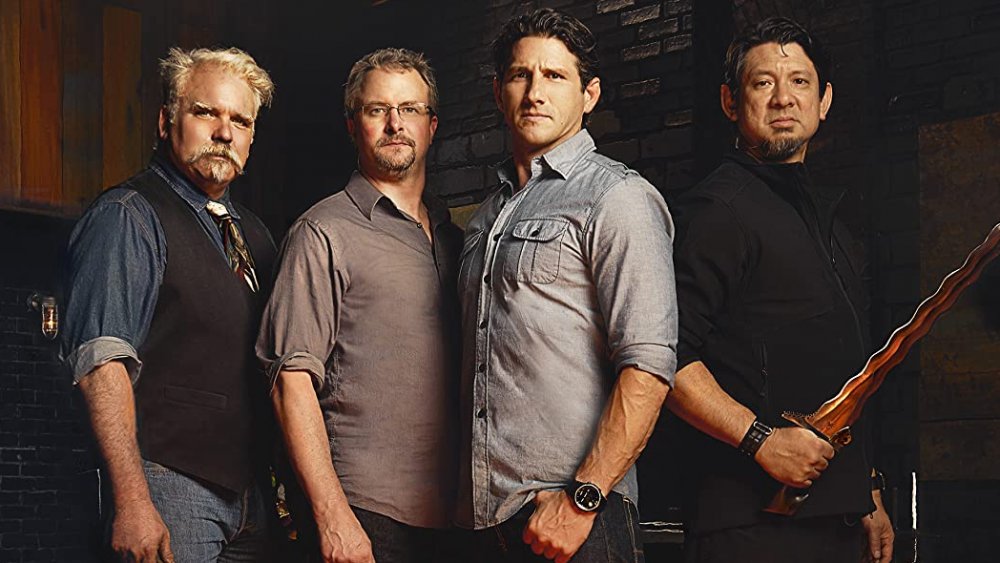
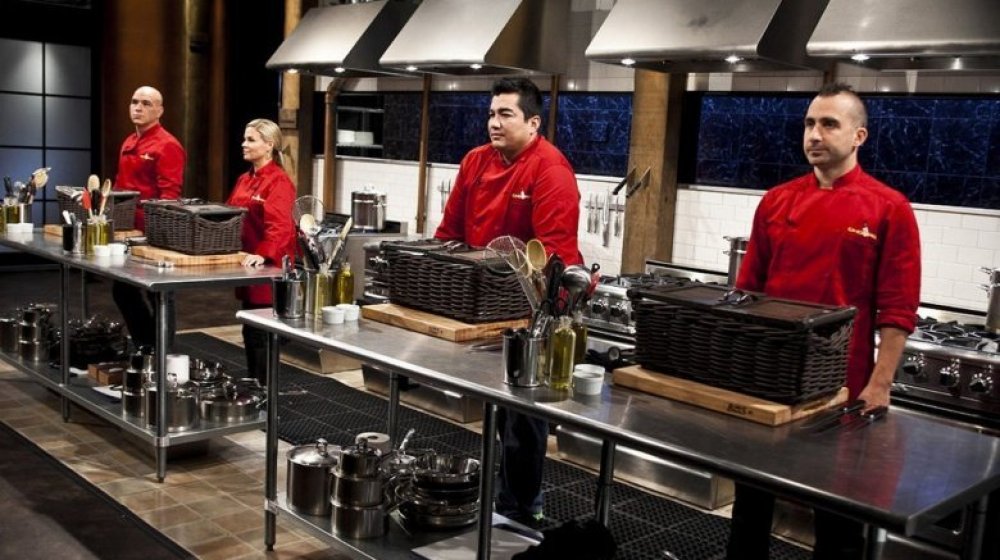
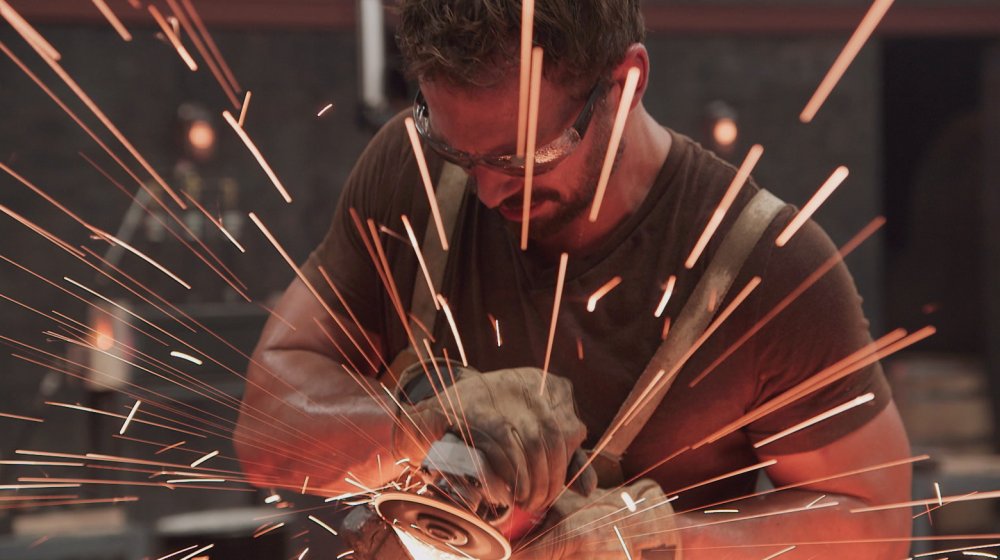
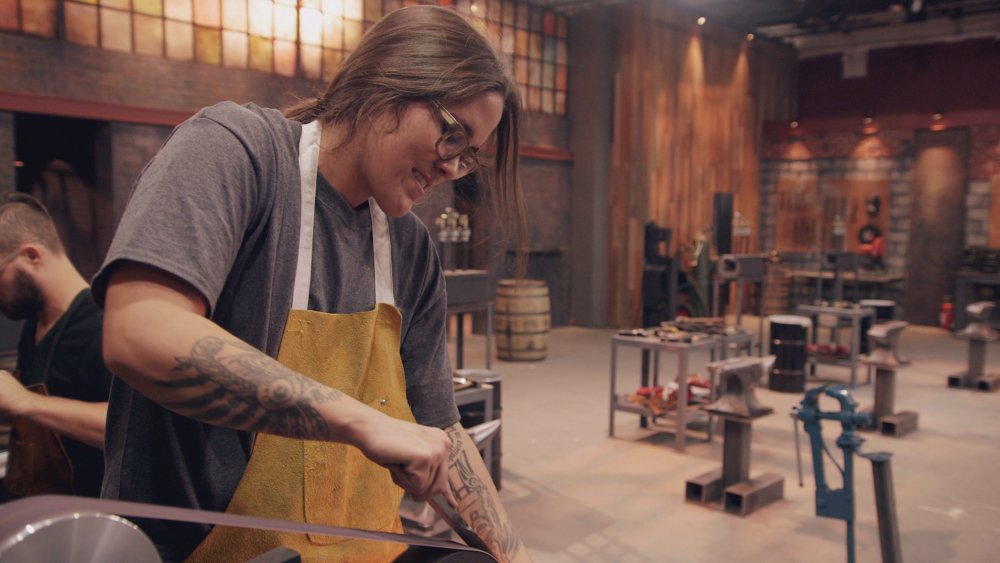
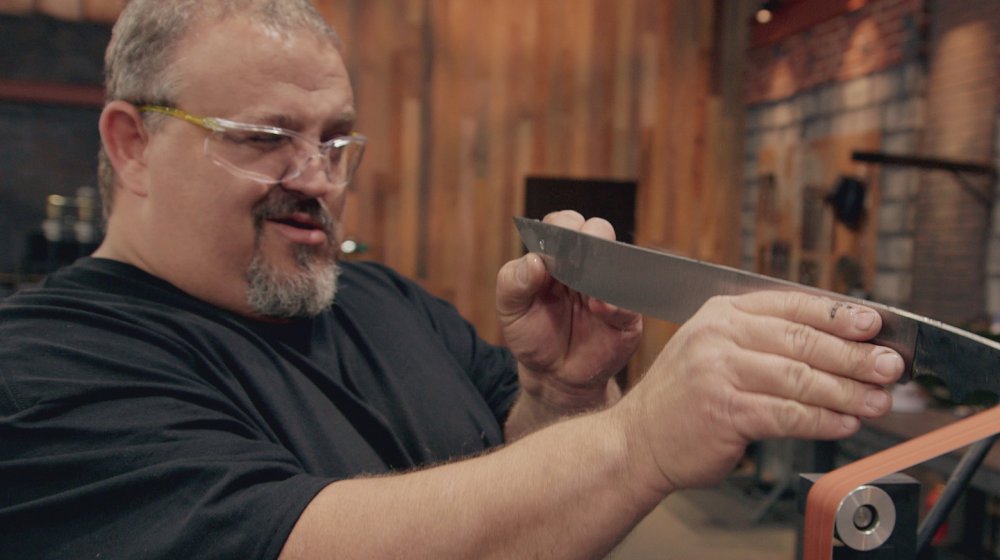
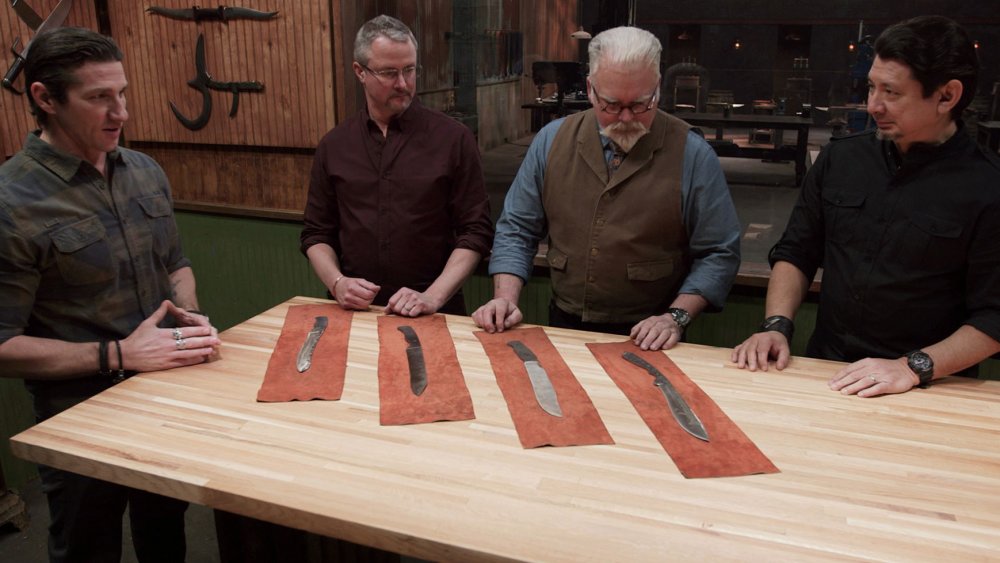
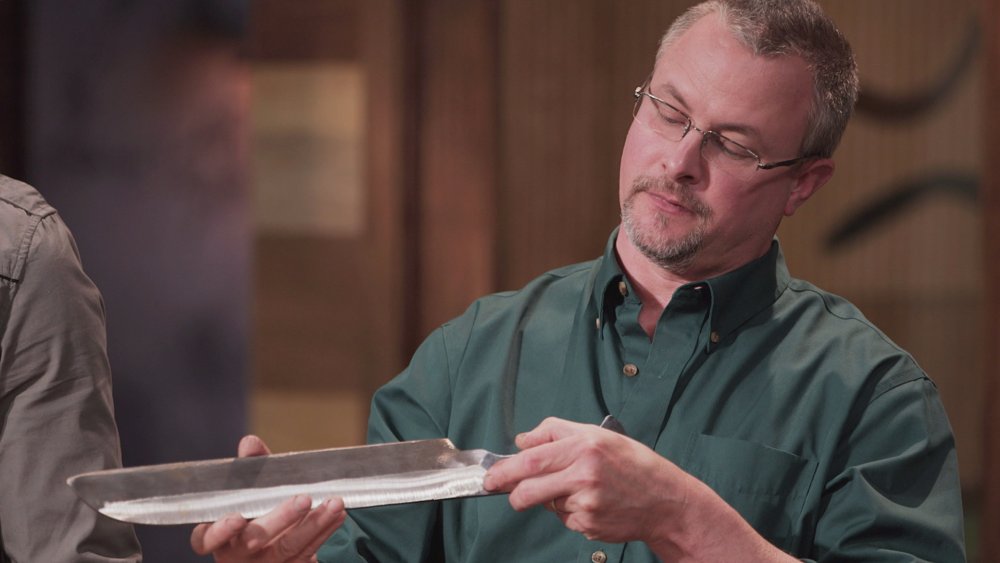

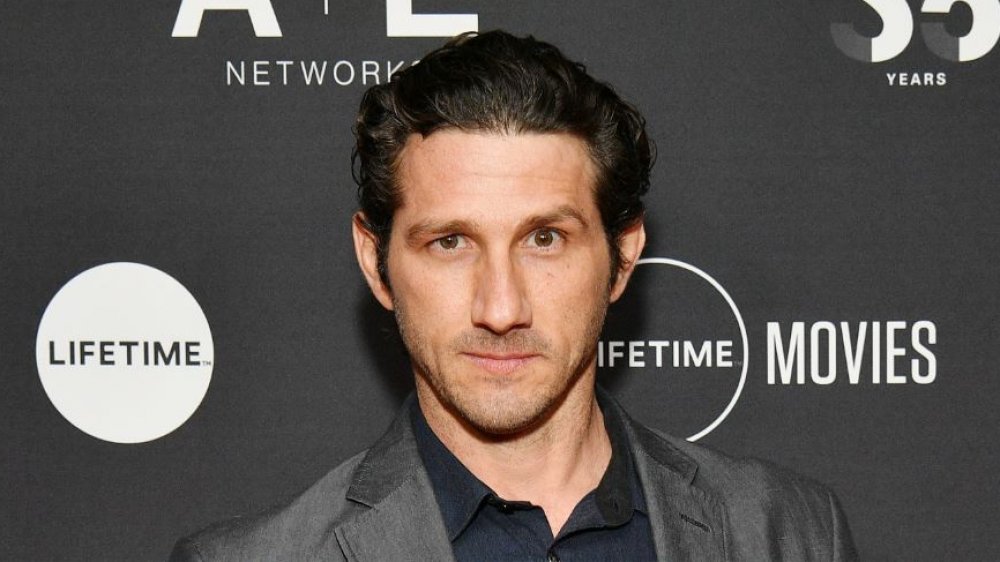
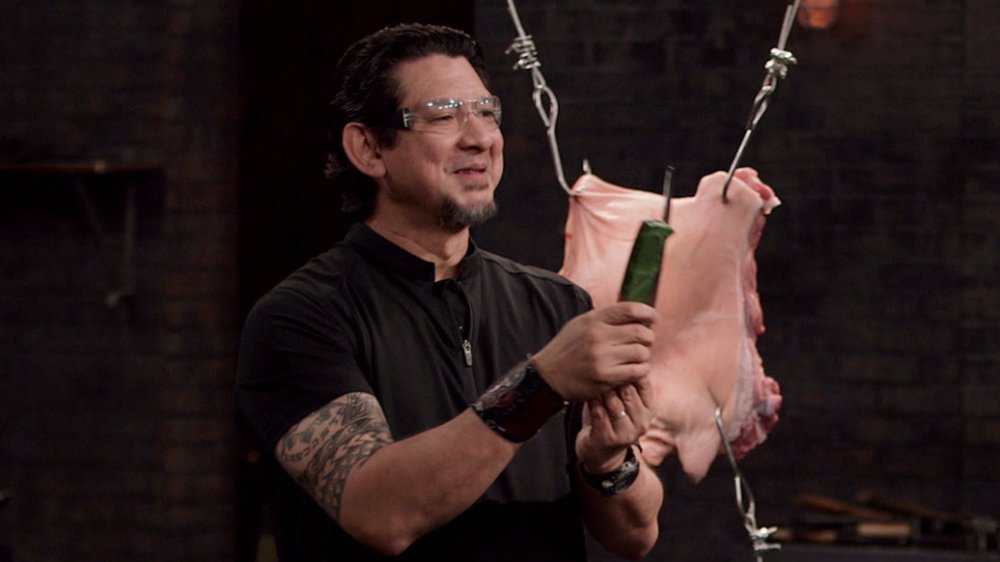
0 Response to "what happens to the blades made on forged in fire"
Post a Comment